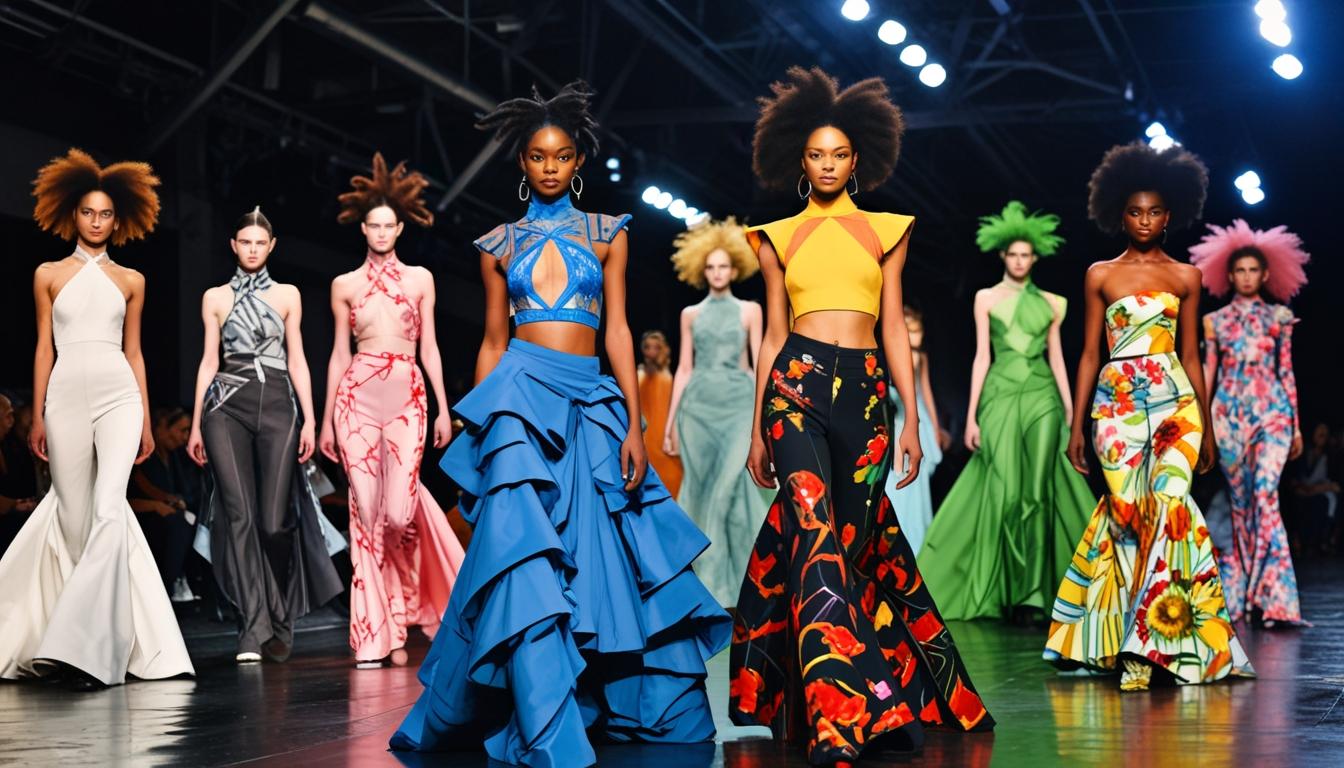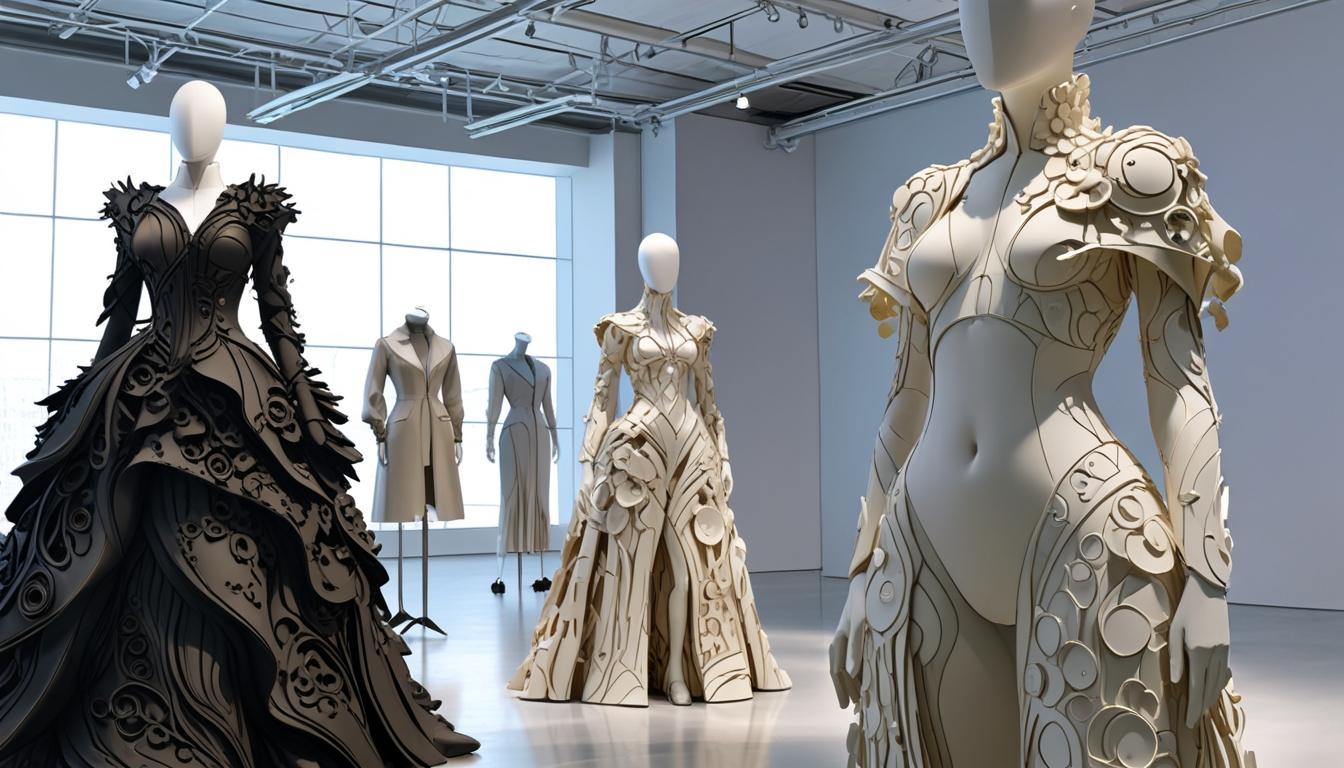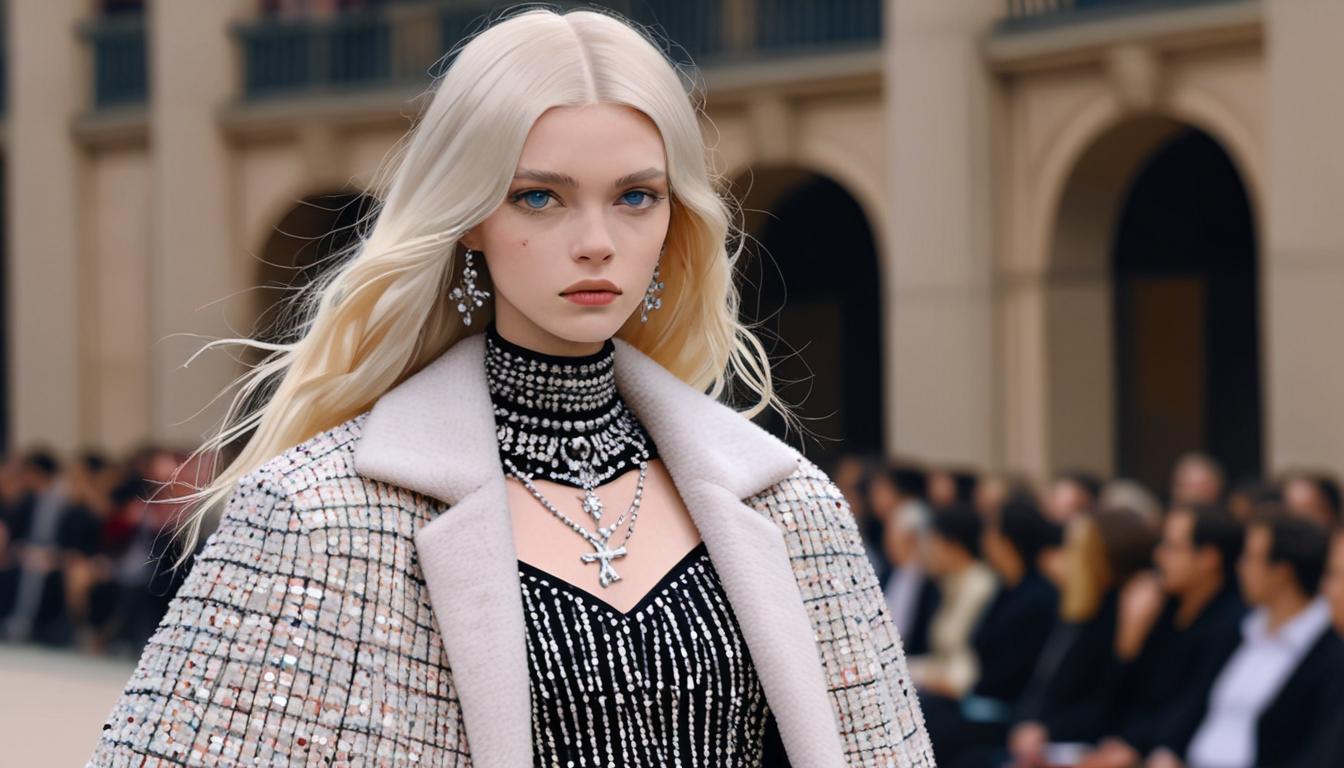In *The Favourite*, Abigail Hill's transformation from a plain maid's outfit to lavish gowns starkly illustrates her ascent and moral decline. You can't help but notice how Sandy Powell's costume design intricately weaves together themes of ambition and vulnerability, making each garment a reflection of the characters' inner struggles. As you consider the impact of these outfits on the narrative, it's worth examining how they not only define the characters but also challenge societal norms. What might these choices reveal about the underlying power dynamics at play?
Overview of Costume Design

Costume design plays a crucial role in storytelling, especially in period films like *The Favourite*. You can really feel the impact of the costumes, thanks to the brilliant work of costume designer Sandy Powell. She used a mix of modern fabrics, like laser-cut vinyl and recycled materials, to create outfits that are both visually striking and historically relevant. This innovative approach to materials mirrors the evolution of fashion over time, much like how vintage pieces from brands like Ralph Lauren can tell a story through their unique characteristics and identifying vintage clothing. How cool is that?
The color palette in the film, featuring black, white, silver, and grey, isn't just pretty; it highlights the power dynamics among the characters. Queen Anne's heavy outfits symbolize her physical and emotional discomfort, giving you a glimpse into her struggles with health issues like gout. You can almost feel the weight of her royal duties!
Then there's Abigail Hill. Her costumes evolve from simple, repurposed materials to lavish gowns adorned with jewels. This transformation mirrors her ambition and rise in status throughout the story. It's like a visual representation of her character evolution.
On the other hand, Lady Sarah Churchill's costumes feature modular design elements, even incorporating menswear like trousers. This choice emphasizes her strength and authority in a male-dominated court. Isn't it fascinating how clothing can express so much about a character?
Character Costume Evolution
In *The Favourite*, the evolution of each character's wardrobe is a powerful visual narrative that reflects their journey and changing dynamics within the court. Take Abigail Hill, for instance. She starts off in a simple, repurposed denim maid outfit, but as she climbs the social ladder, her costumes evolve into extravagant gowns adorned with jewels. You can really see her rising power in those outfits!
Then there's Lady Sarah Churchill, who rocks some menswear elements in her costumes. With structured gowns and trousers, she showcases her strength, while still keeping a feminine touch. It's a clever way to symbolize her authoritative presence in a male-dominated court.
On the flip side, Queen Anne's wardrobe tells a different story. Her heavy, ceremonial garments highlight her declining health and discomfort. The frequent use of nightgowns hints at her depression and unwillingness to engage with court life.
What's fascinating is the modular design of the costumes. You'll notice how characters mix and match outfits, reflecting their character development and the shifting power dynamics as relationships change. The color schemes also play a huge role here! Darker palettes signify Abigail's moral decline, while Sarah's attire exudes a commanding nature.
In this period film, the costume evolution truly mirrors the characters' emotional states and social statuses, pulling you right into their world. Isn't it amazing how clothes can tell such deep stories?
Symbolism in Outfits
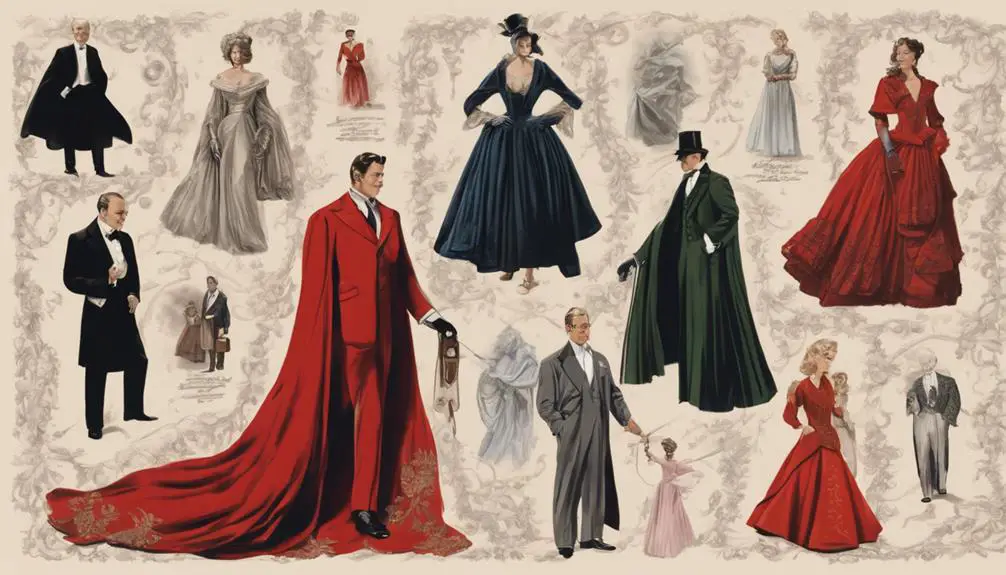
Outfits in *The Favourite* serve as powerful symbols of the characters' internal struggles and changing roles within the court. Just think about it—each costume reveals something deeper about who these women are and what they're up against. For instance, Abigail Hill's transformation from simple denim to lavish gowns isn't just about fashion; it symbolizes her rise in status and moral decline as she gets more ambitious. Isn't it wild how clothes can reflect a character's journey like that?
Then there's Lady Sarah Churchill, who rocks trousers in a male-dominated world. This bold choice rejects traditional gender norms, representing her strength and dominance amidst the power struggles of court dynamics. You can almost feel her confidence radiating through those outfits!
And let's not overlook Queen Anne. Her choice of comfy nightgowns paints a clear picture of her mental health struggles. It's a reminder of her vulnerability and depression, which makes her character so relatable.
The male characters, like Robert Harley, wear elaborate, exaggerated costumes that almost make them look like pawns in a game of chess. Their flashy outfits highlight how the real power lies with the women, showing just how complex these court dynamics can be.
Hair and Makeup Techniques
Hair and makeup in *The Favourite* play an essential role in grounding the characters in realism. You might be surprised to learn that the film took a minimalist approach, banning hairspray to keep everything looking natural. This decision emphasizes character authenticity, making you feel like you're peering into the lives of the 18th-century elite. Director Yorgos Lanthimos even got hands-on with styling the actresses' hair, ensuring it aligned with their emotional journeys throughout the film.
The lead actresses were directed to appear makeup-free, which really reinforces the narrative focus on their struggles and development. It's invigorating, right? Meanwhile, the male characters sported intentionally dirty and garish makeup, showcasing the historical accuracy of 18th-century hygiene. You might think, "Eww!" but it all adds to the film's gritty, realistic vibe.
Wig maintenance was no joke either. The cast had to regularly de-frizz and style their wigs to keep everything looking authentic and true to the period. Can you imagine the effort that went into those wigs? It's a lot of work, but it pays off. Every detail contributes to the film's immersive world, drawing you deeper into the characters' lives.
Impact on Narrative and Themes
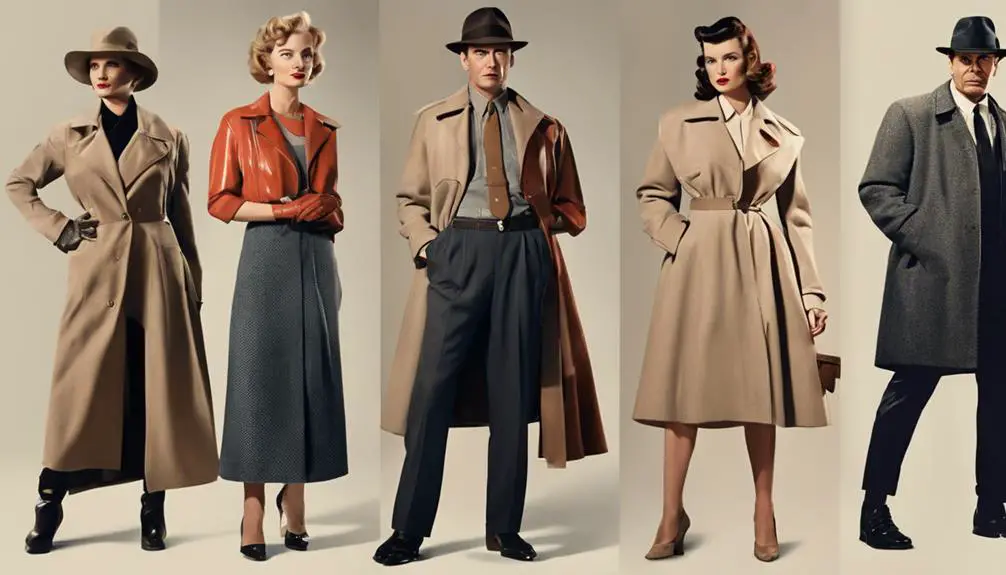
While the costumes in *The Favourite* may seem like mere embellishments, they play an essential role in shaping the film's narrative and themes. You might wonder how outfits can affect the story, but just look at Abigail Hill. Her shift from simple denim to glamorous gowns isn't just about fashion; it mirrors her climb up the social ladder and her ambition to manipulate Queen Anne. Talk about using your wardrobe to wield power!
Queen Anne's nightgown, worn consistently throughout, highlights her vulnerability and depression. It contrasts sharply with the extravagant attire of the other characters, emphasizing the emotional struggles she faces within the cutthroat power dynamics of the court. Meanwhile, Lady Sarah Churchill rocks trousers and modular gowns, challenging traditional gender roles and showcasing her strength in the political arena.
The rivalry between these fierce women is palpable, and their costumes reflect their competition for influence over Queen Anne. Did you notice how the male characters, like Robert Harley, wear exaggerated outfits? This choice cleverly highlights their secondary roles, making the women's portrayals even more nuanced and powerful.
Ultimately, these costumes aren't just for show; they're integral to the story. They reveal emotional states, underline power struggles, and celebrate female agency. So next time you watch *The Favourite*, pay attention to the outfits—they tell a story of their own!
Frequently Asked Questions
Are the Costumes in the Favourite Historically Accurate?
You'll find that the costumes prioritize visual storytelling over historical accuracy. Costume design reflects character representation and fashion influences, sparking authenticity debates, while period details and cultural significance shape audience perception of the designer's inspirations.
Who Did the Costumes for the Favourite?
You'll discover Sandy Powell crafted the costume design for *The Favourite*, blending period details with modern influences. Her fabric choices and color symbolism vividly illustrate character significance and evolution, creating compelling visual storytelling through designer collaborations.
What Era Is the Favourite Set In?
You're exploring an era marked by the early 18th century, where Regency fashion reflects social class and character development. Artistic interpretation and fabric choices enhance the historical context, while color symbolism contributes to the film's cinematic impact.
Who Makes Outfits for Movies?
Ever wondered who weaves the magic behind movie outfits? Costume designers and wardrobe departments craft film fashion, ensuring character representation through historical accuracy, design inspiration, color symbolism, fabric choices, period styles, and cultural influences.

